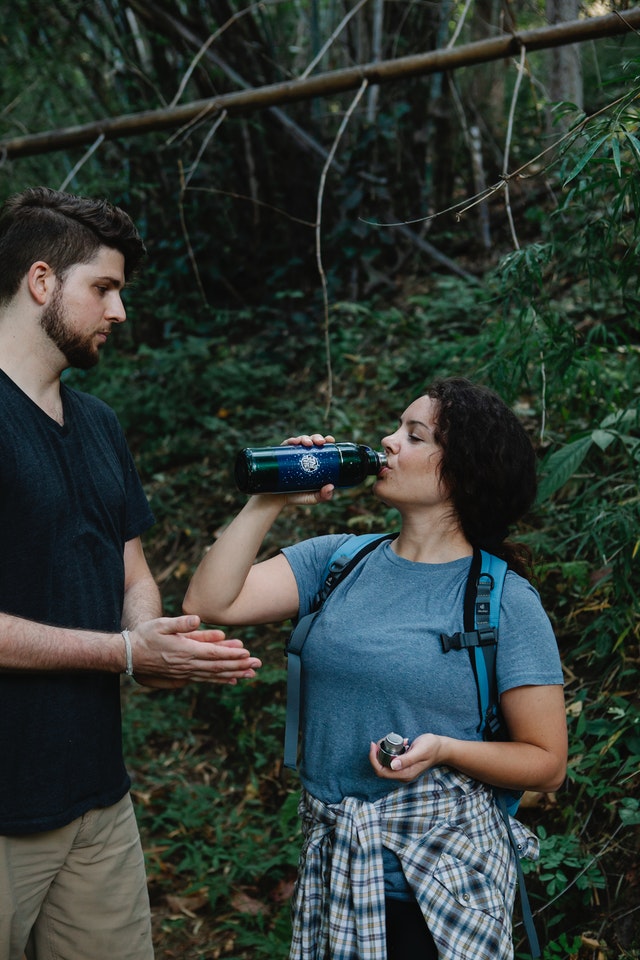
In most parts of the country, including Pennsylvania, summer is often the best season for hiking. However, it’s very important for hikers of all levels to know how to stay safe when hiking in hot weather. Sunny skies, long days, and intense heat can all add up to a challenging and sometimes dangerous combination that can take even experienced hikers by surprise.
While this doesn’t mean you have to stay off the trail when temperatures are soaring, it does mean you need to plan and prepare for your hike with extra care. Read on for a look at some of the most important guidelines to follow for hiking safely in the heat.
Choose your hike carefully.
Summer is not the season to plan an hours-long, exposed hike on a barren, rocky trail. Instead, look for hikes that feature plenty of shade, such as trails that go through woods or forests or trails contained within steep canyon walls. If shade isn’t an option, choose a hiking destination by the ocean or a large lake so you can take advantage of fresher air and cooling breezes. If you’re hiking by a river, dip your hat, shirt, and/or bandana into the water from time to time and drape them on your body: the evaporating water will help keep you cool.
Start early.
Depending on where you are, the day is usually hottest between noon and 3 p.m., or 11 a.m. to 2 p.m. in some places. If you’re planning a longer hike, it may be impossible to avoid this time frame altogether, but you can limit the time you spend hiking in the day’s most intense heat by getting started early (sunrise on the trail, anyone?). If your hike will last into or beyond that critical early afternoon period, try to plan a break, ideally in some shade or near water, during that time. It’s also a good idea to make sure you’ve covered the toughest terrain or completed most of your elevation gain in the morning, before things heat up too much.
Cover up.
While sunscreen is an essential accessory for any hiker, spending a whole day hiking in the sun calls for more serious protection. Nothing shields you from UV rays better than clothing, so avoid the shorts and tank top and instead choose a loose-fitting, long-sleeved top, loose pants, and a wide-brimmed hat for your summer hiking uniform. Protect any remaining exposed areas with UV-blocking sunglasses and plenty of sunscreen.
Stay hydrated.
On a typical hike, your body loses roughly one liter of water every hour, but this amount can more than double if you’re doing a rigorous hike in hot weather. To make sure you stay hydrated on the trail, bring more water than you think you’ll need, and try to sip small amounts frequently rather than stopping only occasionally for a few big gulps.
To help you remember to drink often, it can be worth investing in a hydration pack. With this piece of gear, you can easily sip on the go through a convenient and accessible tube, rather than having to stop and dig around in your backpack for your water bottle. Remember, if you feel thirsty, it means you’re already dehydrated, so make sure you’re sipping even before you think you need to.
Add salt.
Replacing the water your body loses on a hot hike is only one part of the equation. The other is rebalancing your electrolytes—namely, sodium and potassium—to ensure that you don’t run out of energy. Sports drinks or electrolyte tabs that you can add to your water supply can work well for electrolyte replenishing, but so can good, old-fashioned hiking snacks like trail mix and apples or other starchy fruits. As a bonus, the complex carbohydrates found in foods like nuts will be easier on your stomach and boost your energy for longer than simple sugars will.
Rest.
Taking frequent breaks while hiking is always a good idea, but in summer, breaks are essential rather than optional. Giving your body a chance to rest (preferably in some shade) helps your muscles relax and allows your sweat time to evaporate, which will bring down your body temperature. To enjoy your breaks even more, bring an extra pair of socks so you don’t have to wear your sweaty ones while you rest.
Know the warning signs of heat-related health concerns.
Even if you plan carefully and take all the recommended precautions, there is still a risk that you could develop heat exhaustion or heat stroke while on a summer hike. Knowing the warning signs of these conditions can enable you to take early action to protect yourself and your fellow hikers.
Heat exhaustion—When you suffer from heat exhaustion, it means your body can’t cope with the stress of heat. Often accompanied by dehydration, heat exhaustion’s symptoms include heavy sweating, rapid pulse, faintness or dizziness, fatigue, nausea, and headache.
Heat stroke—This is a serious, fast-to-strike medical condition that occurs when your body literally overheats. Signs of heat stroke include symptoms of heat exhaustion along with a change in mental state, such as becoming confused, disoriented, or anxious.
If you or anyone you’re hiking with displays any of these symptoms, stop hiking right away. Find a place to rest in the shade as soon as possible, and cool down as quickly as you can. Remove extra clothing, use cool water and fanning to lower body temperature, and drink water. Then, plan on getting off the trail and seeking medical help as soon as possible: if you need extra assistance, don’t hesitate to call 911.
Sorry, comments are closed for this post.